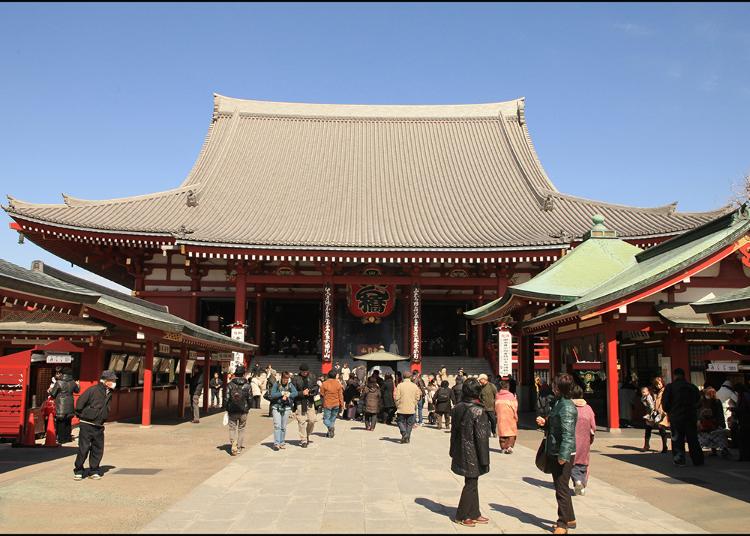
Here are the most popular Temples in Asakusa, according to leading travel website Live Japan! Our ranking is based on the most popular pages viewed by foreign visitors in the past month. Be sure to add them to your Japan travel plan when you visit Asakusa!
1.Senso-ji Temple
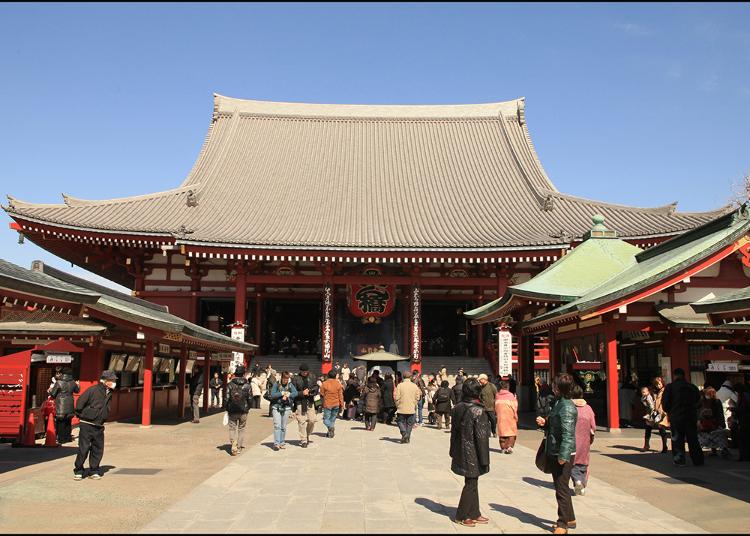
After passing the Kaminarimon Gate with the huge paper lantern, the symbol of Asakusa, you can enjoy food hopping and souvenir shopping, there is Nakamise street, which, leads up to the temple grounds. Founded in 628 AD, Senso-ji Temple is the oldest Buddhist temple in Tokyo and one of the most popular tourist attractions in the metropolis. It is surely a must-visit spot when you visit Japan. Asakusa Kannon, the main object of worship, is said to grant material benefits to the worshipers. The temple grounds are constantly filled with people seeking such benefits, and the number of annual visitors is 30 million, including overseas visitors. The five-storied pagoda and the giant waraji straw sandal said to ward off demons placed at the Hozomon Gate are some of the draws of this temple. On Nakamise Street, events such as the Chinese Lantern Plant Fair and the Hagoita-ichi Battledore Fair are held, and you can experience Edo period scenery (1603-1868). It is a five-minute walk from Asakusa Station on various railway lines such as the Tokyo Metro Ginza Line and the Tobu Isesaki Line.
-

-
Address
2-3-1, Asakusa, Taitou-ku, Tokyo, 111-0032
View Map -
Nearest Station
Asakusa Station (Tokyo Metro Ginza Line / Toei Asakusa Line / Tobu Isesaki Line (Tobu Skytree Line) / Tsukuba Express)
5 minutes on foot
- Phone Number 03-3842-0181
-
Address
2-3-1, Asakusa, Taitou-ku, Tokyo, 111-0032
2.Hozomon Gate
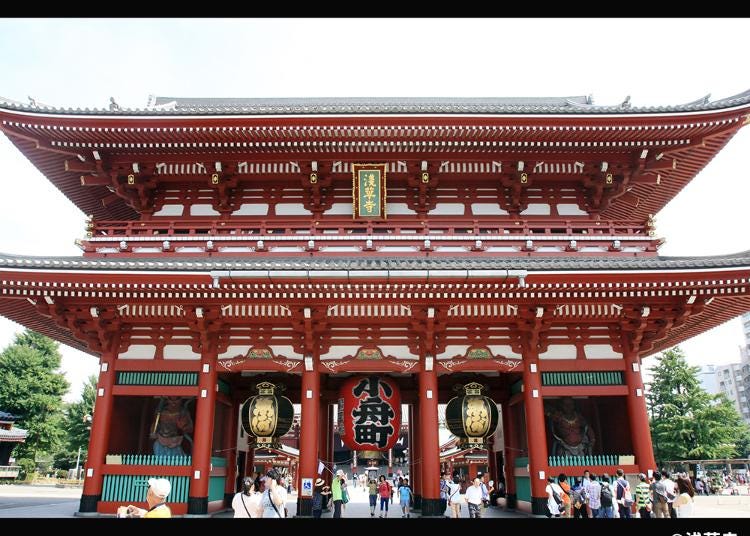
After passing through Nakamise-dori Street of Senso-ji Temple, you will find Hozomon Gate in front of the main hall. The original gate was built in 942 but it was demolished due to fires and air raids. It was later reconstructed in 1964. The gate that houses Nio statues (Kongo Rikishi statues) on each side and has a big lantern in the center is worth seeing. It used to be called Niomon since it had 2 Nio statues. However, a storage room to keep Senso-ji Temple's treasures was created in the gate during the reconstruction work. Thus now it's called Hozomon (treasure house gate). Giant waraji sandals dedicated in 1940 are hung on the other side of the gate. The 4.5-meter long and 1.5-meter wide waraji sandals weigh 500 kg each and were created to ward off evil. There is a perfect spot near the gate to take photos of the waraji sandals with Tokyo Skytree (R) in the background. A 5-minute walk from Asakusa Station on the Subway Ginza and Asakusa Lines or Tobu Isezaki Line (Tobu Skytree Line).
-

-
Address
2-3-1, Asakusa, Taitou-ku, Tokyo, 111-0032
View Map -
Nearest Station
Asakusa Station (Tokyo Metro Ginza Line / Toei Asakusa Line / Tobu Isesaki Line (Tobu Skytree Line) / Tsukuba Express)
5 minutes on foot
- Phone Number 03-3842-0181
-
Address
2-3-1, Asakusa, Taitou-ku, Tokyo, 111-0032
3.Five-storied Pagoda
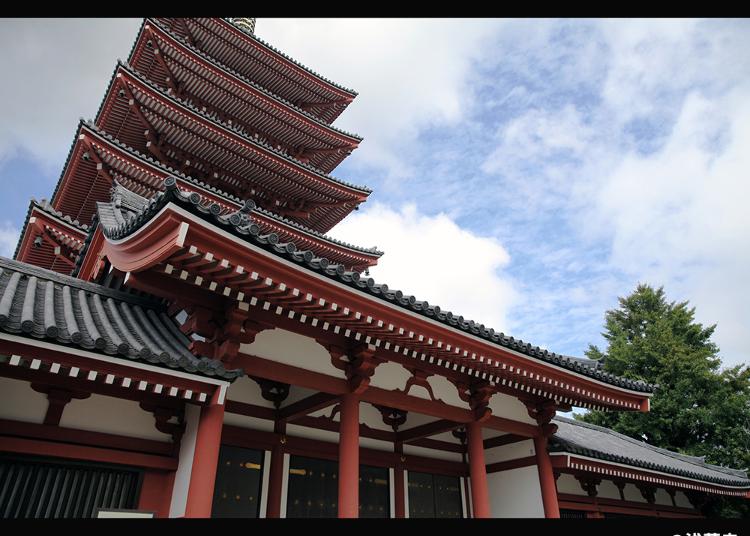
This five-stored pagoda inside the grounds of a popular tourist spot, Senso-ji Temple is a typical tower found in many Buddhist temples in Japan. Inside the pagoda, the remains of Buddha, the founder of Buddhism is placed. The original pagoda was constructed in 942. However, it has been successively lost by fire and subsequently reconstructed. The current pagoda was rebuilt in 1973 over the reinforced concrete base building and is 53.32 meters high. It becomes a popular sightseeing spot also for foreign visitors and draws attention. The pagoda is illuminated at night to highlight its beautiful vermilion color together with the Kaminarimon Gate and the Hozoumon Gate. It shows a different face from daytime and you will surely be impressed by it. A five-minute walk from Asakusa Station on various train lines.
-

-
Address
2-3-1, Asakusa, Taitou-ku, Tokyo, 110-0007
View Map -
Nearest Station
Asakusa Station (Tokyo Metro Ginza Line / Toei Asakusa Line / Tobu Isesaki Line (Tobu Skytree Line) / Tsukuba Express)
5 minutes on foot
- Phone Number 03-3828-5171
-
Address
2-3-1, Asakusa, Taitou-ku, Tokyo, 110-0007
4.Matsuchiyama Shoden

Matsuchiyama Shoden is one of the sub-temples of Senso-ji temple, about a ten-minute walk away from the temple complex. It is also one of the Buddhist temples housing one of the Seven Lucky Gods of Asakusa. Its main object of worship is Daisho Kangiten (God of Bliss), the avatar of the Eleven-faced Kannon Bodhisattva or Ekadasamukha adhered by common people as a Bodhisattva granting the worldly wishes. Daikon radishes and kinchaku (Japanese traditional pouches) can be found anywhere on the premises and are icons representing the material benefits granted by the Bodhisattva. The daikon radishes signify good physical health as well as successful marriage encounters and matrimonial happiness. The kinchaku signify business success and how great the benefits of believing are. in the main hall you will find a lot of donated daikon radishes. It is known as a prominent power spot within the Tokyo Metropolitan area and one of the Asakusa rickshaw tour destinations. It is a ten-minute walk from ”Asakusa” Station of the Tokyo Metro Ginza Line.
-

-
Address
7-4-1, Asakusa, Taitou-ku, Tokyo, 111-0032
View Map -
Nearest Station
Asakusa Station (Tokyo Metro Ginza Line / Toei Asakusa Line / Tobu Isesaki Line (Tobu Skytree Line) / Tsukuba Express)
10 minutes on foot
- Phone Number 03-3874-2030
-
Address
7-4-1, Asakusa, Taitou-ku, Tokyo, 111-0032
5.Kaminarimon

The gigantic red paper lantern emblazoned with ”Kaminarimon” in kanji at the entrance of Senso-ji Temple is surely a landmark of Asakusa. As a popular photo spot, it always has many domestic and overseas sightseers. On the east side of the gate is a statue of Fujin (god of wind); on its west side, a statue of Raijin (god of thunder). The offcial name of the gate is ”Fu-raijin-mon,” but somehow Fujin was dropped, and the name uses another reading for Rai, ”kaminari.” The gate has burned down a number of times. The current structure was rebuilt in 1960 with a donation from Konosuke Matsushita, founder of Panasonic. The massive lantern — four meters high, 3.3 meters in diameter and weighing about 700 kilograms — was renewed in 2013. A one-minute walk from Exit 1 of Asakusa Station on either the Tokyo Metro Ginza or Toei Asakusa Lines.
-

-
Address
2-3-1, Asakusa, Taitou-ku, Tokyo, 111-0032
View Map -
Nearest Station
Asakusa Station (Tokyo Metro Ginza Line / Toei Asakusa Line / Tobu Isesaki Line (Tobu Skytree Line) / Tsukuba Express)
1 minute on foot
- Phone Number 03-3842-0181
-
Address
2-3-1, Asakusa, Taitou-ku, Tokyo, 111-0032
*Prices and options mentioned are subject to change.
*Unless stated otherwise, all prices include tax.
Popular Tours & Activitiess
-

Fine Dining on Rails? Japan Announces Stunning NEW 'Laview' Restaurant Train
-

10 Must-Buy Cosmetics at Don Quijote (2025 Edition)
-
Ad
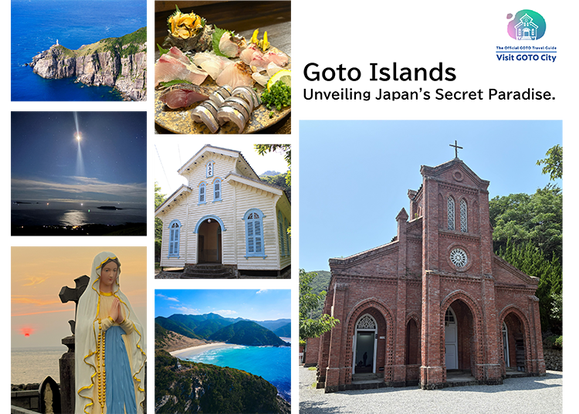
Walk in the Footsteps of Believers: A 4-Day Pilgrimage Across Goto City
by: Yohei Kato
-
Ad

Okinawa Travel Troubles? Guide to the MCC Hotline for Illness and Weather Emergencies
-
Ad

Get Your Perfect Custom Suit at GINZA Global Style PREMIUM Ginza Honten: Choose from 5,000 Fabrics, Starting at 26,400 Yen (incl. tax)!
-

(12% OFF KKday Coupon) Mt. Fuji Autumn Leaves, Powder Snow & More! 15 Best Tours to Experience Japan in Fall & Winter
Inspiration for Accommodations
-

Enjoy Mt. Fuji from the Comfort of Your Room! Recommended Ryokan with Mt. Fuji View
-

Stay Near the Cherry Blossoms! Hotels for Cherry Blossom Viewing in Tokyo
-

Family-Friendly Hotels with Free Shuttle to Disneyland: Convenient Access for a Magical Stay
-

Top Ranked Hakone Hotels with Mt. Fuji View: Enjoy Stunning Scenery from Your Private Space
-

Convenient Tokyo Hotels with Airport Shuttle: Ideal for Families and Heavy Luggage
-

Stunning Tokyo Tower View Hotels: Enjoy Spectacular Scenery from Your Private Space
-

Convenient Asakusa Hotels with Kitchens: Ideal for Extended Family Visits
-

Experience Luxury: Hakone's 10 Best Five-Star Accommodations
-

Enjoy Mt. Fuji Autumn Leaves! Top Hotels Near the Popular Autumn Leaves Corridor
-

Experience Hakone Fall Foliage from Your Room with Stunning Views
-

What to Pack for Japan: 8 Essential Things for a Hassle-Free Trip
-

Healthcare in Japan for Tourists: What to Do When You Get Sick or Injured in Japan
-

One-Day Itinerary Idea: Tour Tokyo's Historic Asakusa Neighborhood
by: Mae Kakizaki
-

Tokyo Asakusa|Asakusa Station Area Map & Sightseeing Information
-

Exploring Tokyo Station: 11 Must-Visit Spots Around the Heart of Tokyo
-

Past and present of Yanesen
- #best ramen tokyo
- #what to buy in ameyoko
- #what to bring to japan
- #new years in tokyo
- #best izakaya shinjuku
- #things to do tokyo
- #japanese nail trends
- #what to do in odaiba
- #onsen tattoo friendly tokyo
- #daiso
- #best sushi ginza
- #japanese convenience store snacks
- #best yakiniku shibuya
- #japanese fashion culture
- #best japanese soft drinks




















